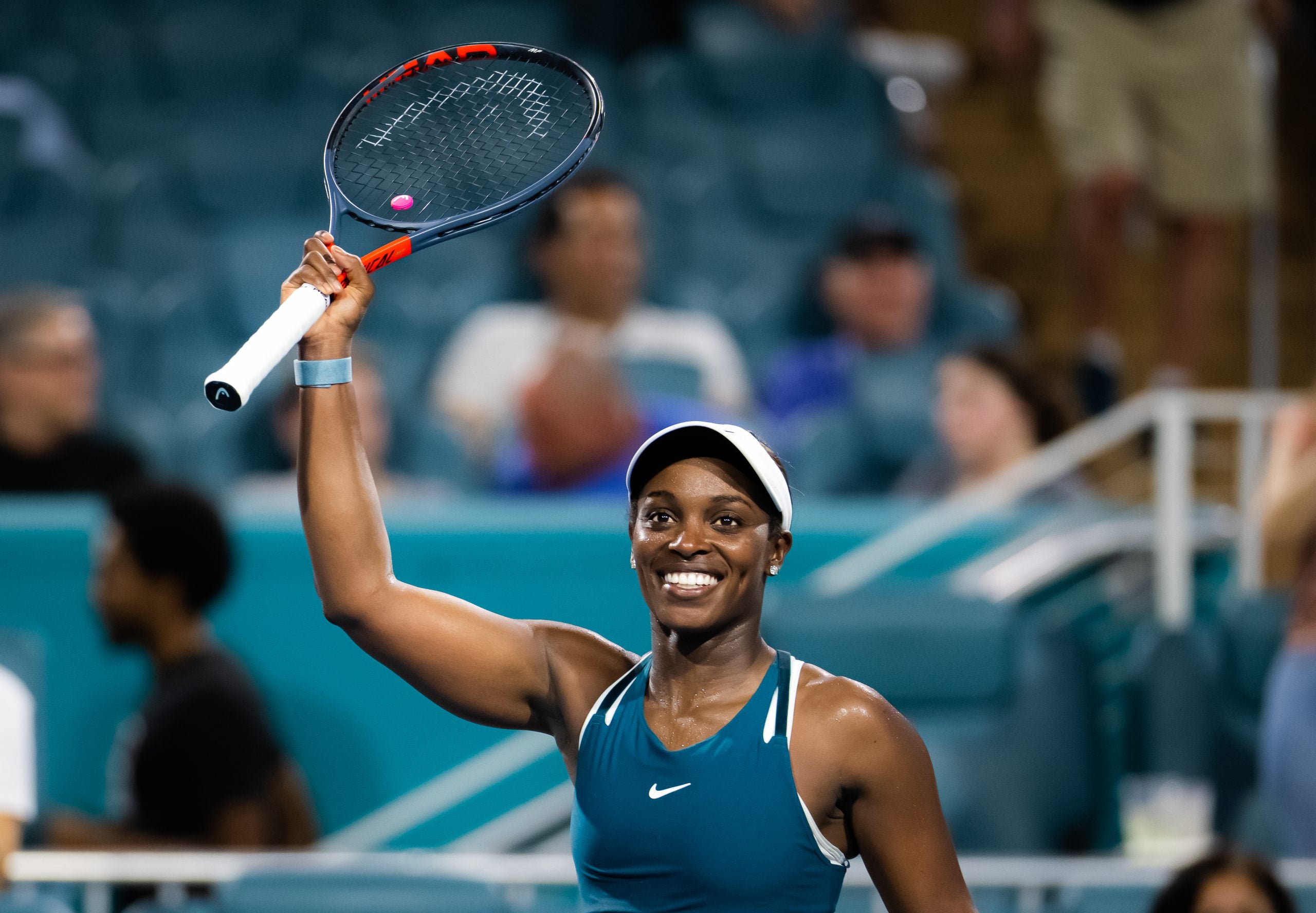
Athletes are widely known for their physical abilities, but what can often be overlooked about them is the mental willpower they utilize to reach new levels of success. In the case of tennis champion Sloane Stephens, the 29-year-old’s decorated career is an ever-evolving display of the resilience necessary to overcome life’s toughest setbacks.
In 2017, Stephens won the coveted U.S. Open title. What made her success all the more incredible was the fact that she won after being on hiatus for 11 months due to a severe foot injury.
“When I was working my way back at Wimbledon following my foot surgery, my goal wasn’t to win the U.S. Open eight weeks later like I ended up doing,” she tells ESSENCE. “My focus was on making incremental progress each day and truly enjoying the process since it could’ve all gone away forever. That joy and gratitude for being back on tour helped me to play freely.”
Stephens’ ability to overcome hurdles in her career is a testament to her relentless drive as a fierce sportswoman who has conquered the practice of mind over matter.
“It has taken a lot of work and effort to be where I am today, both physically and mentally. The pursuit of mental health requires daily practice just like any other muscle you’d train,” she shares. “I have my family and my team around me constantly supporting me; those are the voices I hear and the opinions I respect.”
She also has support to stay physically ready to do battle on the court thanks to WHOOP. The fitness tracking wearable makes a great difference in her training.
With her official comeback season underway, we caught up with Stephens to discuss her love of the WHOOP band, how she’s defining herself outside the tennis court, the meditation practices her mother instilled in her, and how she finds time for self-care.
ESSENCE: With your busy schedule, being recently married, and running a slew of side projects and initiatives, how do you find a balance between your career and personal life?
Sloane Stephens: I don’t think balance exists in a perfect equilibrium all the time. For me, it’s more so a matter of being very intentional and deliberate with where I am putting my time and effort at any given moment.
If I’m on a Zoom for one of my businesses or for the Sloane Stephens Foundation, I am fully present in that meeting and handling what needs to be done. If I am enjoying time with my husband, I have my phone on Do Not Disturb and am fully present with him. The same thing goes for my training on and off the court.
Your mom, who is a psychologist, imparted a lot of meditation and visualization practices on you while you were growing up. Tell us more about how this has played a role in your success as a tennis player and impacted your own self-care.
My mom has been with me every step of the way. As a former high-level competitive athlete herself, she approaches every situation with empathy and she understands the unique pressures I’m under.
I always am very outwardly calm on the court, and that’s because I focus my efforts internally on visualizing the next point and focusing on my breathing. I learned these tools from my mom. Generally in life, I strongly believe that if you can see it, you can be it, so visualization is a way of bringing that practice entirely within your control. Taking those moments to visualize and breathe is also a form of self-care, as you are speaking kindly and positively to yourself.
Tell us about how WHOOP supports you in staying healthy, finding a balance in your mind/body, and managing stress/training — and why it was important for you to partner with the brand.
WHOOP has been a game changer for my training and recovery. Before I started wearing my WHOOP, I relied on intuition and guessing to see how hard I was working, how well I was sleeping, and how I was recovering. Now that I wear a WHOOP, all of this data and more are available on my wrist.
I also love the community element to WHOOP and have a group with my friends and family where we can see each others’ strains and motivate each other to be active.
You’ve previously mentioned that you used to feel like your tennis ranking “defined” who you were as a person. As you’ve come into your own over the years, how have you been able to find yourself and define who you are on your own?
I praise the virtues of therapy! For a period of time, I defined myself as “Sloane the tennis player ranked x.” However, I’ve grown to value myself as Sloane the person and playing tennis as my job. There are multiple facets to my identity and my ranking is not an accurate or holistic representation of who I am as a person.
I always believe that my best is yet to come and I work hard each day with that belief in mind, so I no longer allow myself to stress over my ranking at any point in time. Easier said than done, but I have worked really hard to have this healthier relationship with these external figures.




